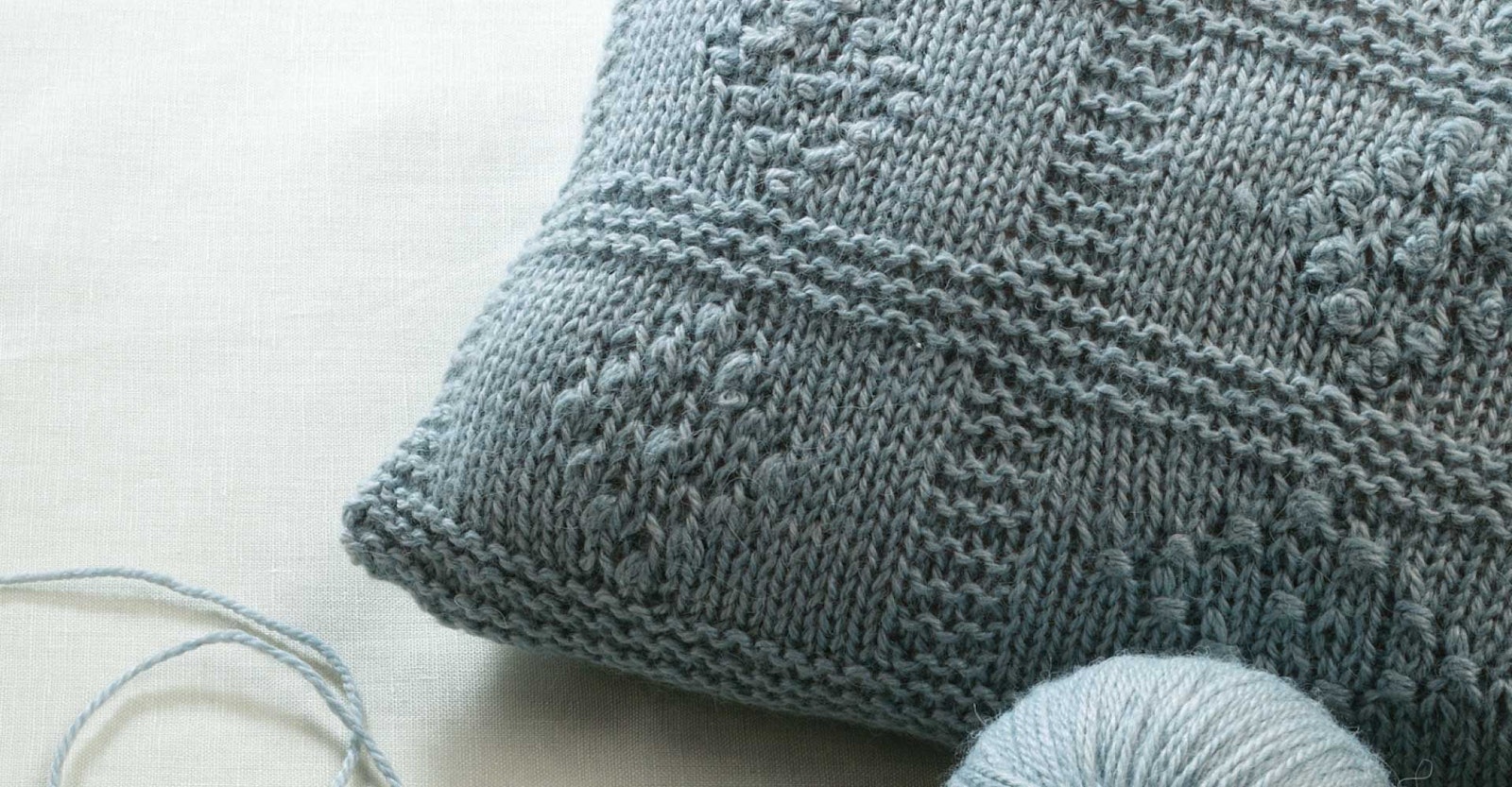I have never been very fond of bobbles, the little knobs or bumps that decorate an Aran sweater, for example. I love how they look, but I have always found them awkward to make and “a bit fiddly.” In recent years, however, my research into Estonian knitting has turned up some interesting ways to achieve these decorative features. So I decided to do a bit more research to see how many techniques I could find to make bumps in knitting.
“Bobble” seems to be the most common name for a bump in knitting, but other names include popcorns, tufts, and nupps (“nupp” is Estonian for “button,” “bud,” or “knob”). Most bobbles are made by increasing a number of stitches, usually five, from one stitch. These increases are created by knitting into the front and back of the stitch multiple times. You can knit one, yarn over several times, or knit one, purl one several times into the same stitch. With any of these techniques, the final maneuver is to knit, thus giving you an odd number of stitches. After you make the increases, you turn the work and either knit or purl the increased stitches. You turn the work again and add another row or even two to the increased stitches or decrease them to one right away. Most are started and finished on the right side of the work. Some are tiny; some are huge. The approach you choose depends on how you want the fabric to look.
In my opinion, the best yarn for working these bumps is worsted- or Aran-weight wool in a two- or three-ply. This yarn has the loft necessary to create a rounded and substantial bobble. There is bound to be a small hole on both sides of the bobble, and a lofty yarn helps diminish these holes. You also can work the stitches on both sides of the holes tightly to help close them.
 Nancy Bush’s knitted “Bump” pillow (unstuffed) with nine bobbles, knots, tufts, and Estonian nupps
Nancy Bush’s knitted “Bump” pillow (unstuffed) with nine bobbles, knots, tufts, and Estonian nupps
In my research, I also found several techniques for making smaller bumps, called “popcorn,” “tufts,” “knots,” or “clusters.” All involve increasing three to five stitches from one, and in most cases, the decreases happen immediately. For example, the Knot pattern from The New Stitch Library by Leslie Stanfield is worked as follows: into one stitch, you knit one, purl one, knit one, purl one, and knit one to make five stitches. You then pass the second, third, fourth, and fifth stitches, one at a time, over the first stitch.
In recent years, the Estonian word “nupp” has become part of the international knitting language. In fact, I now see patterns that simply call for nupps, without defining the word or giving the origin of the technique. In Estonia, I found two distinct ways of making nupps, each with a particular result. The first I call a “wrapped nupp.” This small bobblelike feature is made over two stitches, both wrapped with the working yarn. Wrapped nupps often are used to create geometric patterns, zigzags, diamond shapes, and even stylized flower shapes in stockinette stitch on mitten cuffs. I have never seen wrapped nupps used with openwork or lace.
 The back of Nancy Bush’s knitted “Bump” pillow with three “bobble” buttons
The back of Nancy Bush’s knitted “Bump” pillow with three “bobble” buttons
It is the second type of nupp that is used as texture and to outline figures in lace and openwork patterns. This nupp is created, beginning on the right side of the work, by increasing a number of stitches from one. Usually, the increases are made by knitting five or seven stitches into the “mother stitch,” working a yarnover, knitting into the first stitch again, and repeating both the yarnover and the knit stitch again until the desired number has been achieved. On the next row, a wrong-side row, the increased stitches are purled together. Alternatively, you can make this nupp on the wrong side of the work and finish on the right side by knitting the increased stitches together through the back loops. (A third possibility for working a circular lace pattern is to increase the stitches on one round and decrease them back to one stitch on the next round by knitting them together through the back loop.)
Both the similarities and the differences among bobbles, popcorns, knots, and nupps are noteworthy. Each technique has its own appeal, as well as its own pitfalls and pleasures. Some might be more fun to create than others, but each one can add an interesting texture to your knitting.
Interested in trying your hand at nupps? This article and the companion project can be found in the July/August 2010 issue of PieceWork.
Also, remember that if you are an active subscriber to PieceWork magazine, you have unlimited access to previous issues, including July/August 2010. See our help center for the step-by-step process on how to access them.
Resources
- Compton, Rae. The Illustrated Dictionary of Knitting. Loveland, Colorado: Interweave, 1989.
- Gibson-Roberts, Priscilla A., and Deborah Robson. Knitting in the Old Way. 1985. Reprint, Fort Collins, Colorado: Nomad Press, 2004.
- Põldoja, Maimu. Kudumine [Weaving]. Tallinn, Estonia: Valgus, 1992.
- Robinson, Debby. Encyclopedia of Knitting Techniques. Emmaus, Pennsylvania: Rodale Press, 1987. Out of print.
- Stanfield, Leslie. The New Stitch Library. Radnor, Pennsylvania: Quarto Publishing, 1992. Out of print.
- Zimmerman, Kathy. “Bobbled Braids” in Arans & Celtics: The Best of Knitter’s Magazine. Sioux Falls, South Dakota: XRX Books, 2003.
Nancy Bush is the author of numerous books. In addition to the publications listed in the resources, she gathered information for this article and project from “The Yarnpath” by Robbyn, Staceyjoy Elkin, and conversations in Estonia with Hilja Aavik and Linda Elgas, both accomplished lace knitters.
Originally published September 11, 2020; updated November 6, 2023.

